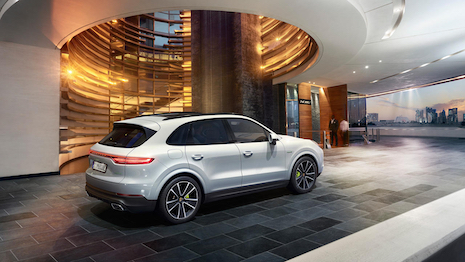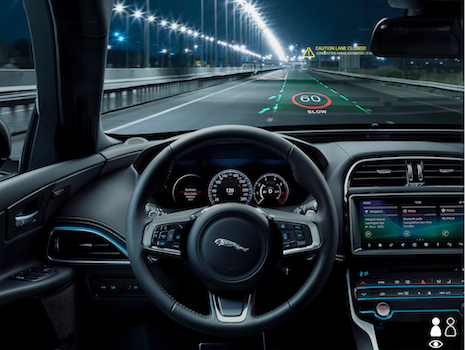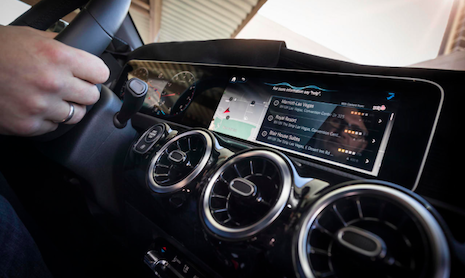 The Porsche Cayenne was the highest ranked luxury SUV. Image credit: Porsche
The Porsche Cayenne was the highest ranked luxury SUV. Image credit: Porsche
Drivers’ reactions to in-vehicle safety technology vary widely based on automaker, with many consumers remaining wary towards the automated features manufacturers have been emphasizing.
According to the J.D. Power 2019 U.S. Tech Experience Index (TXI) Study, drivers find many vehicle alerts to be bothersome despite automakers’ intentions for these automated features to promote safety. With drivers not responding well to more straightforward automated technologies, automakers should reevaluate how they educate consumers on fully automated vehicles in the future.
“There is a high degree of volatility for consumer acceptance to the advanced driver assistance system (ADAS) technology,” said Kristin Kolodge, executive director of driver interaction and human machine interface at J.D. Power, Costa Mesa, CA. “There is a tension between some performance characteristics that cause red flags to be raised, like the systems being annoying and bothersome or have unusual and startling behavior, versus helping the new vehicle owner avoid a crash.”
J.D. Power’s TXI study was based on a survey of 14,800 drivers who purchased or leased a new 2019 model year vehicle in the previous 90 days that is an all-new or redesigned model within the past three years. Due to limited market share, not every luxury car segment was evaluated in the study.
Disconnected drivers
J.D. Power asked drivers about their experiences and interactions with 38 driver-centric vehicle technologies, which are categorized into entertainment and connectivity, comfort and convenience, driving assistance, collision protection, navigation and smartphone mirroring.
The index average was 781 on a 1,000-point scale, with scores ranging from 834 for the Kia Stinger to 709 for the lowest-rated model.
Jaguar is testing safety alerts that will be projected onto the road for drivers. Image credit: Jaguar Land Rover
Collision protection was the strongest technology category with a score of 813. Smartphone mirroring and comfort and convenience followed with respective scores of 789 and 787.
Driving assistance and navigation were the weakest categories. Drivers report frustration towards safety alerts, and they are losing interest in factory-installed navigation systems.
Lane-centering and lane-keeping systems have proved to be some of the most irksome features for drivers.
An average of 23 percent of drivers complain that lane-departure alerts are annoying, though this ranges from 8 percent to 30 percent for individual brands. Automakers must find a balance between having these alerts be effective but not intrusive or bothersome.
More than six in 10 drivers who are turned off by lane-departure alerts disable the feature, as do 21 percent of drivers who did not harbor negative feelings for the alerts. Almost 40 percent of drivers who find the feature annoying do not want it on their next vehicle.
Smartphones also continue to be a threat to in-vehicle technology, with drivers often preferring phone apps over those built into their cars. Twenty-nine percent of respondents disabled or discontinued use of built-in apps.
MBUX is a voice assistant in new Mercedes-Benz models. Image credit: Mercedes-Benz
More than two-thirds, 69 percent, of drivers have Apple Car Play or Android Auto in their vehicles, opting to use their smartphones rather than factory-installed navigation systems. Future desirability for in-vehicle navigation is less for those with smartphone mirroring than it is for those without it, at a comparative 68 and 72 percent.
“Apps in the vehicle are challenged by consumers being so familiar with the apps on their phone, that the reason of familiarity and ease of use of the smartphone app wins out over the in-vehicle execution,” Ms. Kolodge said. “In many cases, consumers are not even giving their in-vehicle app a try, and simply stick with what they know.”
Premium on safety
Among the highest ranked luxury vehicles in J.D. Power’s Index are the Porsche Cayenne, BMW 5 Series, Audi Q58 and Cadillac XT4.
Although affluents are often drawn to luxury vehicles because of design and performance, safety features are an important consideration. Ahead of the fully automated or self-driving cars of the future, luxury automakers have been introducing more automated and safety features into their vehicles.
Toyota Corp.’s Lexus is hoping to reduce crashes by incorporating its advanced safety system on all new vehicles starting with the 2020 model year. The Lexus Safety System+ covers four safety areas using automated pre-collision warning and braking.
Lexus is also adding Lane Departure Alert, which uses alerts and steering wheel vibrations to notify drivers if they are swaying or exiting a lane inadvertently at speeds above 32mph (see story).
In future vehicles, British automaker Jaguar Land Rover hopes to incorporate innovative displays that project safety alerts. In one of the first uses of in-vehicle augmented reality among automakers, the displays will also allow passengers to personalize their rides.
Among the safety information shared with drivers through the display are lane departure, hazard detection, navigation and reducing poor visibility due to environmental conditions. AR is used to add depth perception to the safety alerts that are projected onto the road ahead of the driver (see story).
“Premium models continue to be the typical introductory platform for new vehicle technology before integrating it into mass market,” J.D. Power’s Ms. Kolodge said. “Unlike nearly every other automotive satisfaction study J.D. Power conducts, premium owners have lower overall TXI satisfaction than non-premium owners.
“The premium segment’s older customer base generally has a more difficult time with usability than younger generations,” she said. “Additionally, premium vehicles tend to be more content-heavy, which can add to the complexity of technology operation.”

